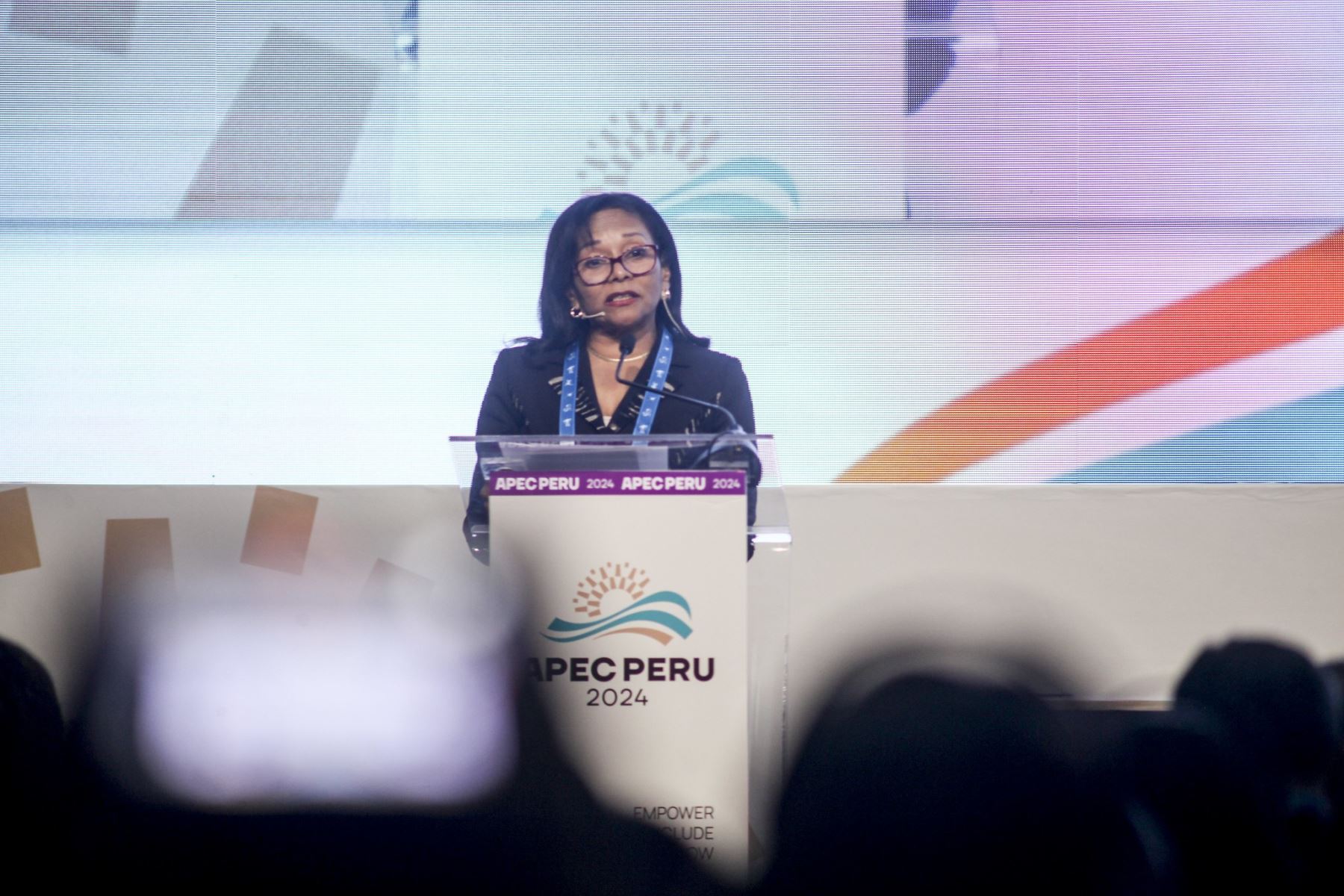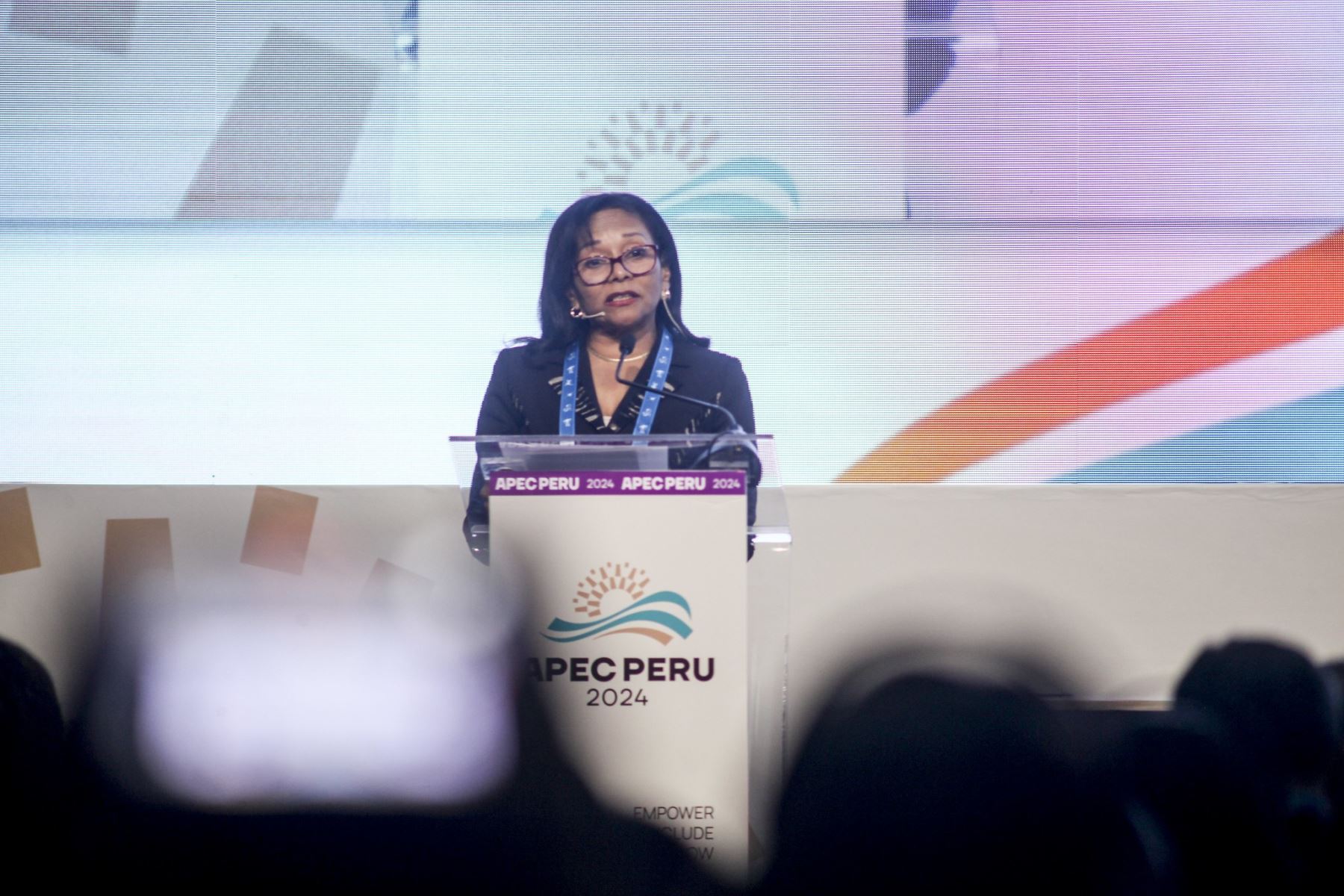
AREQUIPA (Peru), May 18 (NNN-ANDINA) — “If women are not included, our economies will lose the potential of almost 50% of their population,” said Teresa Hernandez, Peruvian Minister of Women and Vulnerable Populations, as she opened a public-private sector dialogue on championing women’s economic empowerment.
The dialogue focused on the financial inclusion of women as a pillar of economic development, as well as the role of technology in reducing and eliminating violence against women.
In her remarks, she said that, although financial inclusion is a powerful tool that can transform lives and promote equality plus economic growth, only two out of 10 women in Latin America are fully included in the financial system.
“We have a lot to do. There are still laws in several of our economies that require women to seek permission from their spouses to work or ask for their signature to access the financial market,” Hernandez said.
According to the APEC Women and the Economy Dashboard, only nine economies have laws that prohibit discrimination in access to credit by creditors on the basis of sex or gender.
“When they manage to access credit, the amounts usually do not meet their financial needs, because they can hardly demonstrate properties or significant or sustained incomes to support their requests. Starting, expanding, strengthening, and formalizing businesses prove to be complex challenges and difficult to access for women,“ Hernandez indicated.
“Barriers persist that hinder equal participation of women in economic growth. Thus, they dedicate more hours to unpaid care work than their male counterparts without services that allow them to join paid work,” she added.
She stressed that the financial system plays a crucial role as financial inclusion generates a substantial increase in women’s economic participation, both through their companies and ventures, as well as through occupying decision-making positions and leading productive plus commercial processes of broad impact in member economies.
“It is not possible to achieve sustainable development if women are excluded because society assumes that they must postpone their expectations and plans to assume the burden of care as an exclusive responsibility of theirs,” she expressed.
Experts at the dialogue also discussed the role of technology and innovation to prevent violence against women and girls, sharing best practices and examples on the use of artificial intelligence and policies that promote violence-free environment, as well as fostering public-private partnership to advance these efforts.
“The use of technological tools can introduce risks and produce negative impacts on the population and businesses, which demands sustained preventive actions. Peru has various experiences in which technology and the internet are used to prevent acts of violence,” Hernandez said.
“We are here not just as participants, but as an active part of an alliance that commits us to forge a future of economic empowerment for women and their greater integration into the Asia-Pacific economy —where equality is consolidated as a tangible reality that positively changes the lives of women, their families, and therefore, our economies and societies,” she concluded.
Peru is hosting APEC for the third time after the 2008 and 2016 editions.
APEC is made up of: Australia, Brunei Darussalam, Canada, Chile, People’s Republic of China, Hong Kong, Indonesia, Japan, Republic of Korea, Malaysia, Mexico, New Zealand, Papua New Guinea, Peru, the Philippines, the Russian Federation, Singapore, Chinese Taipei, Thailand, the United States, and Vietnam.
Together, they account for 62% of world’s GDP, 48% of global trade in goods and services, plus 38% of the planet’s population. — NNN-ANDINA






